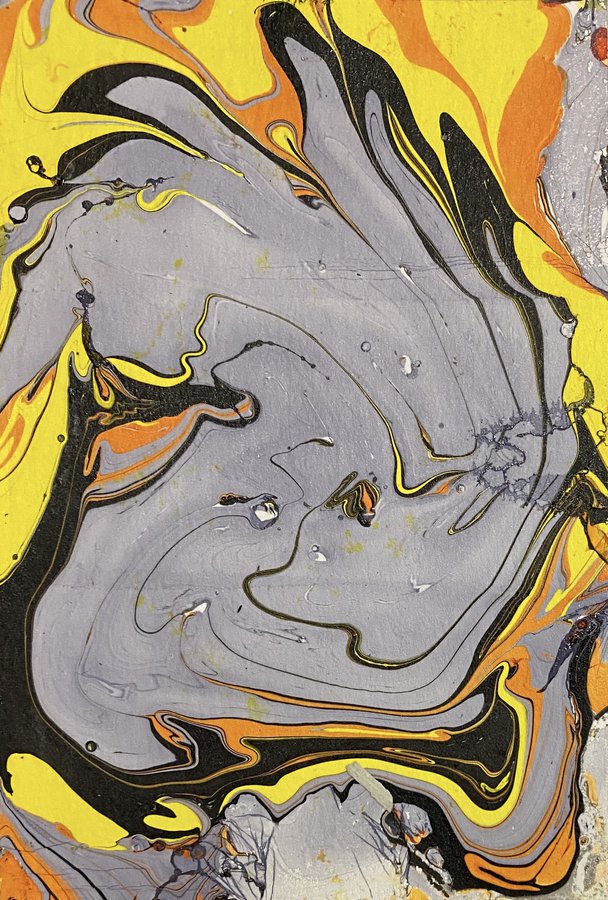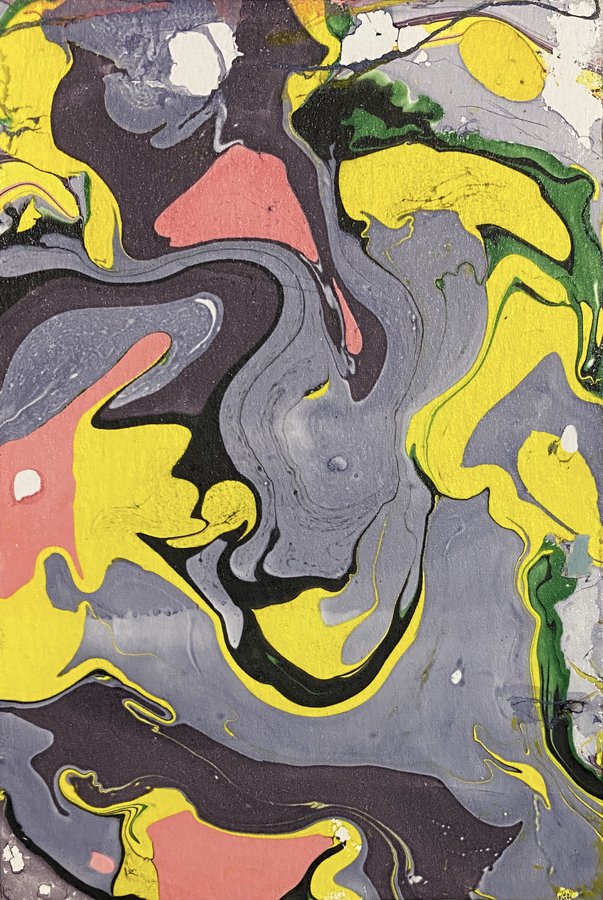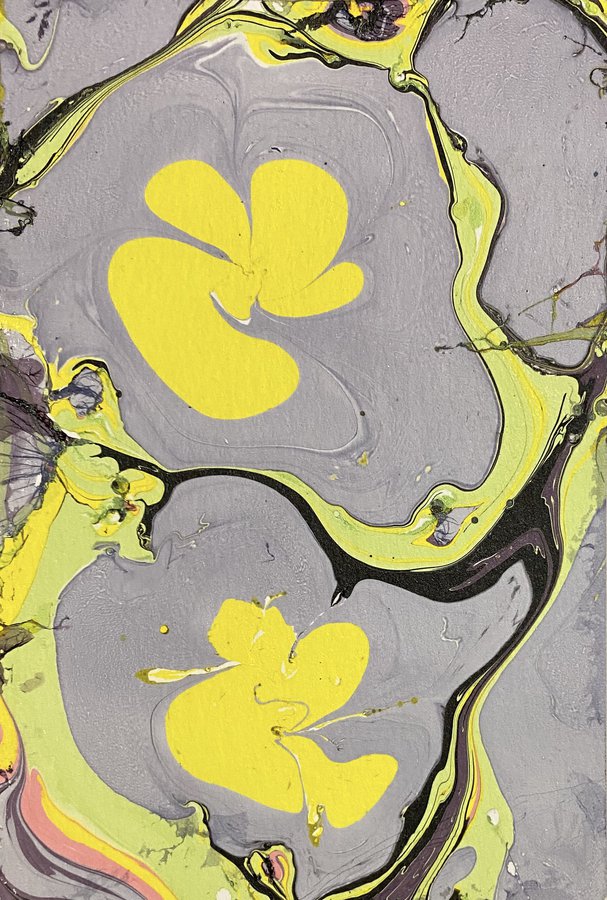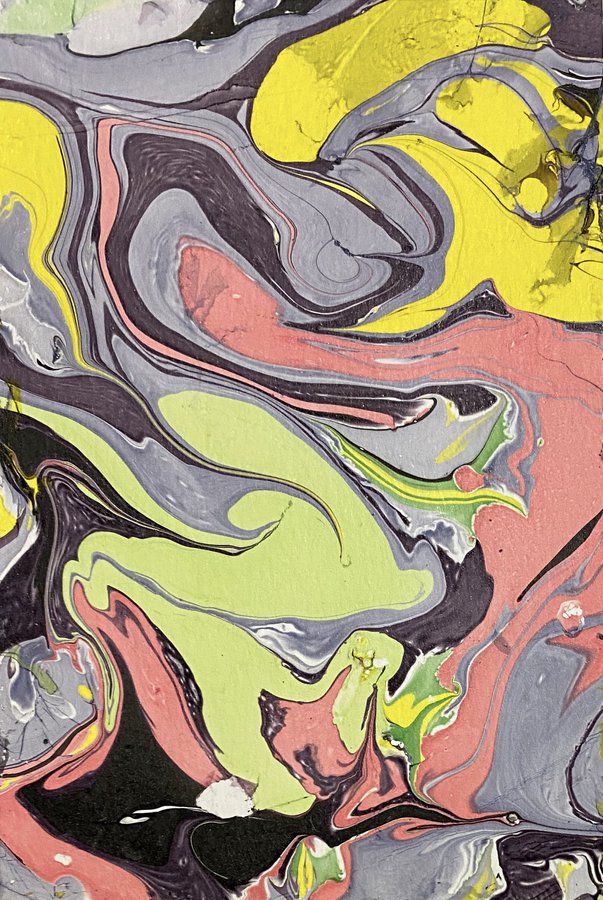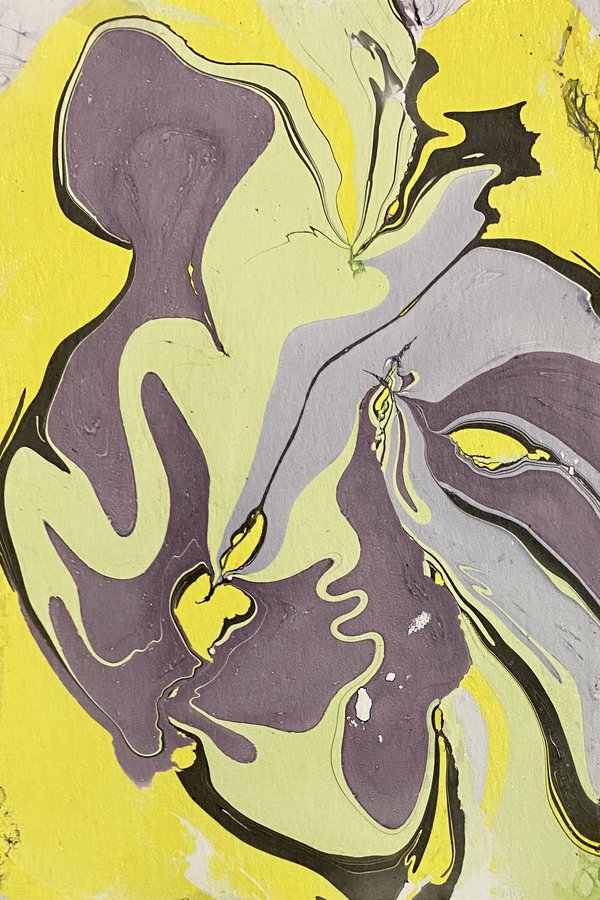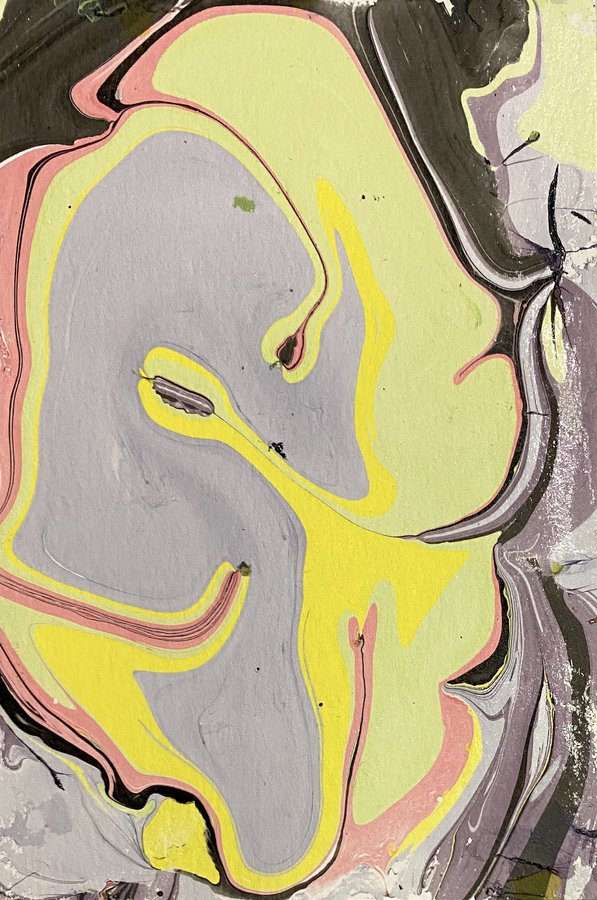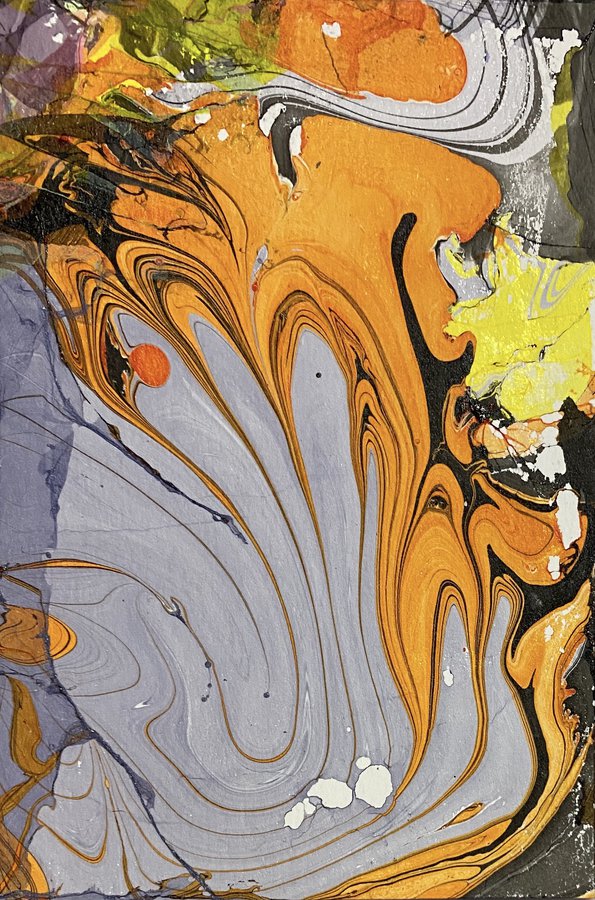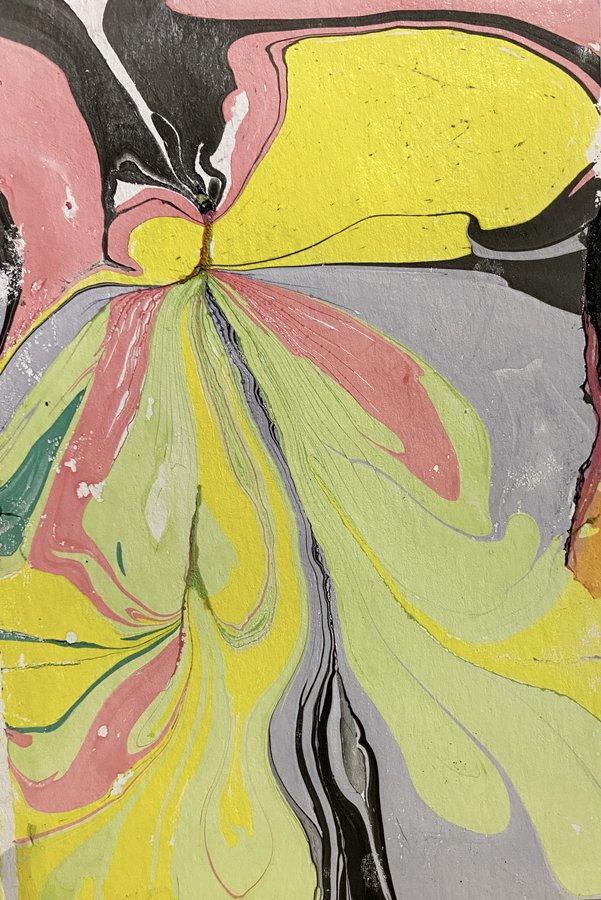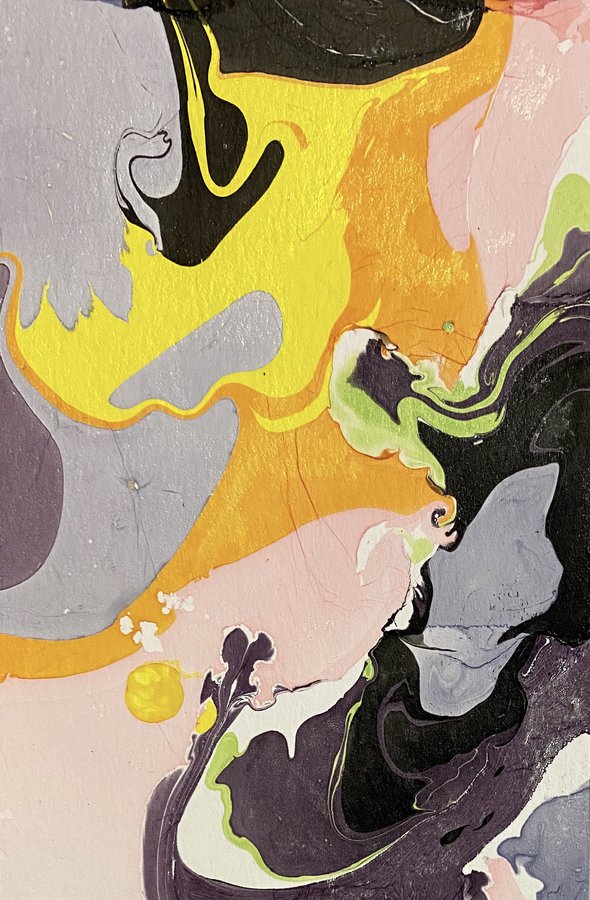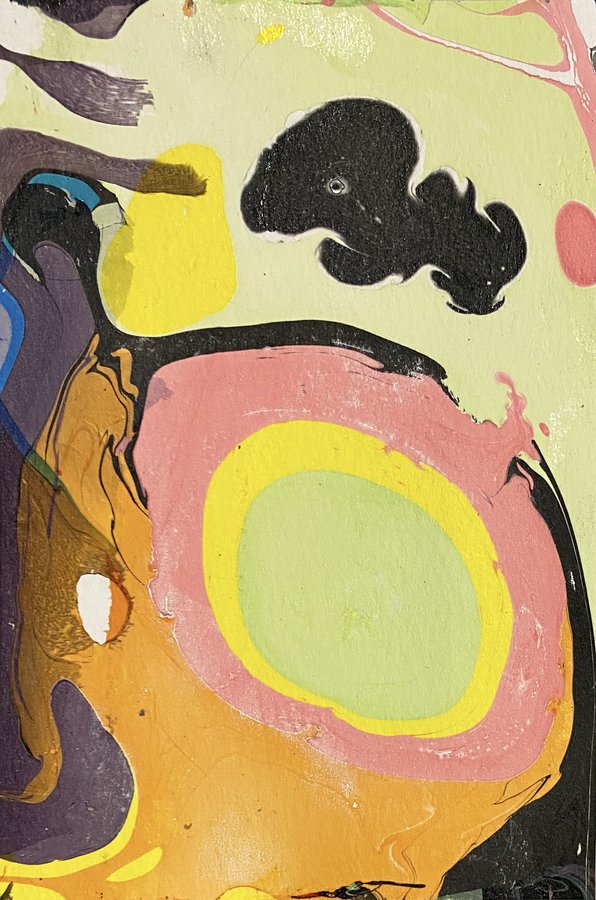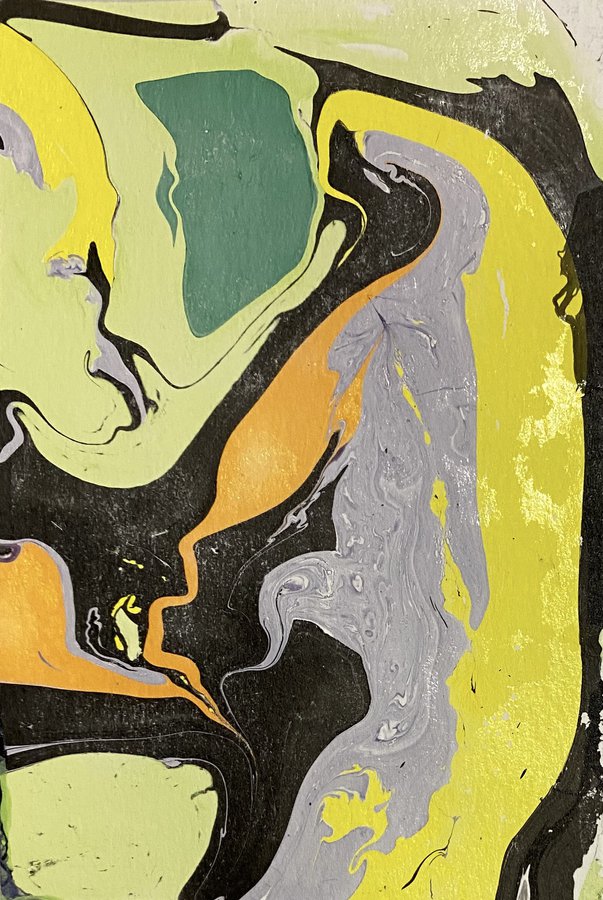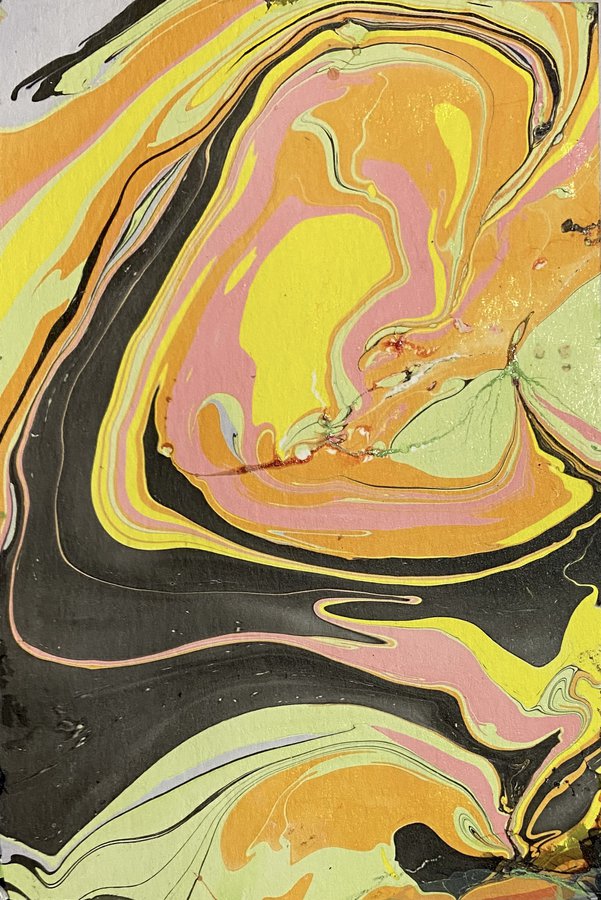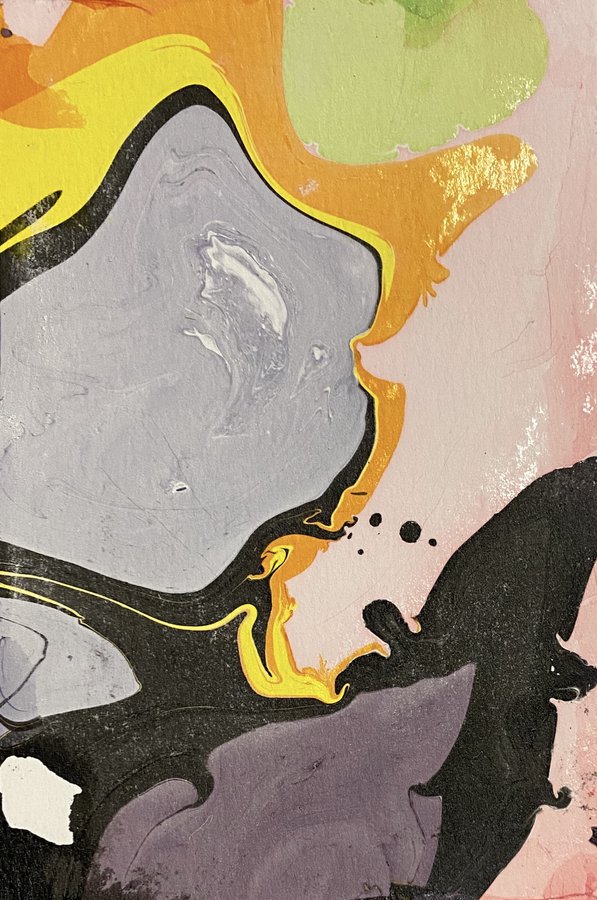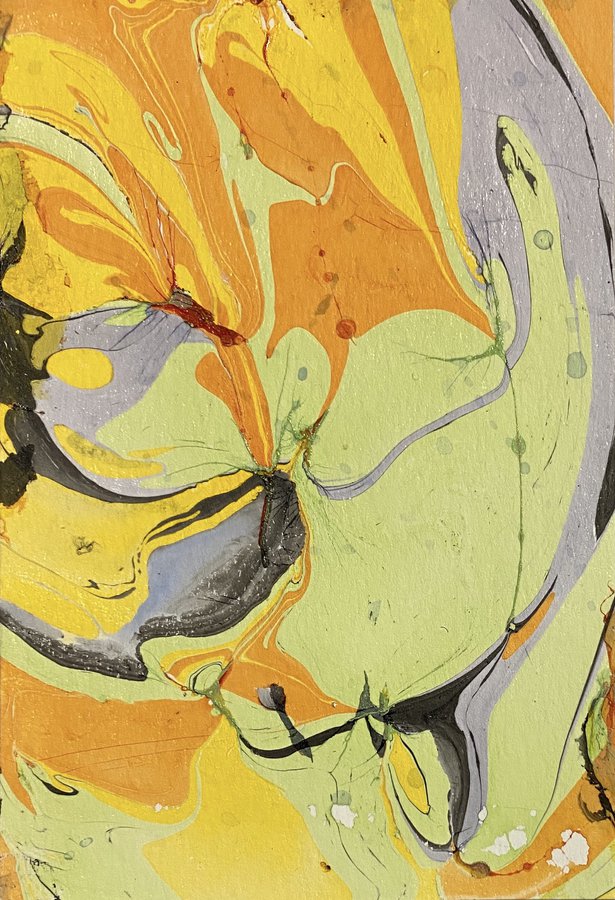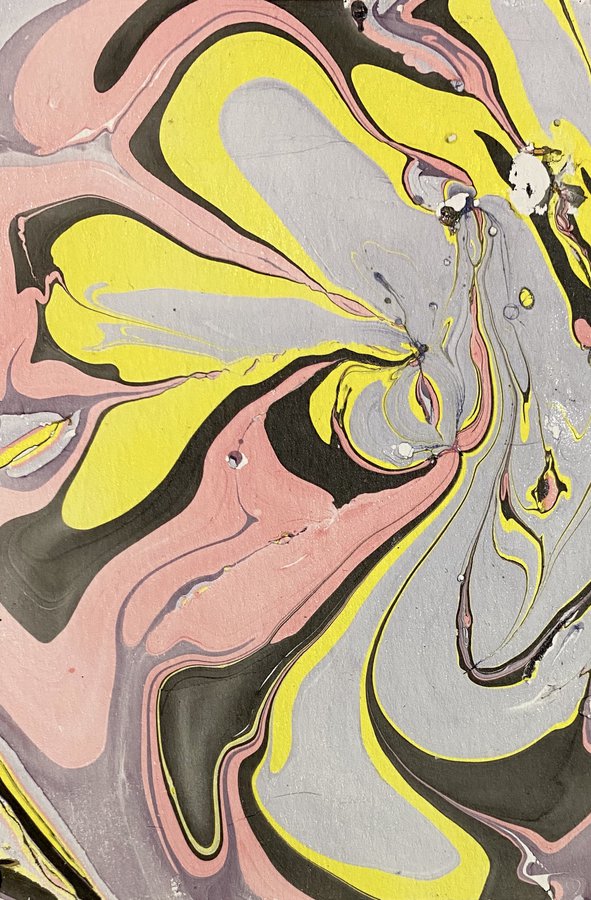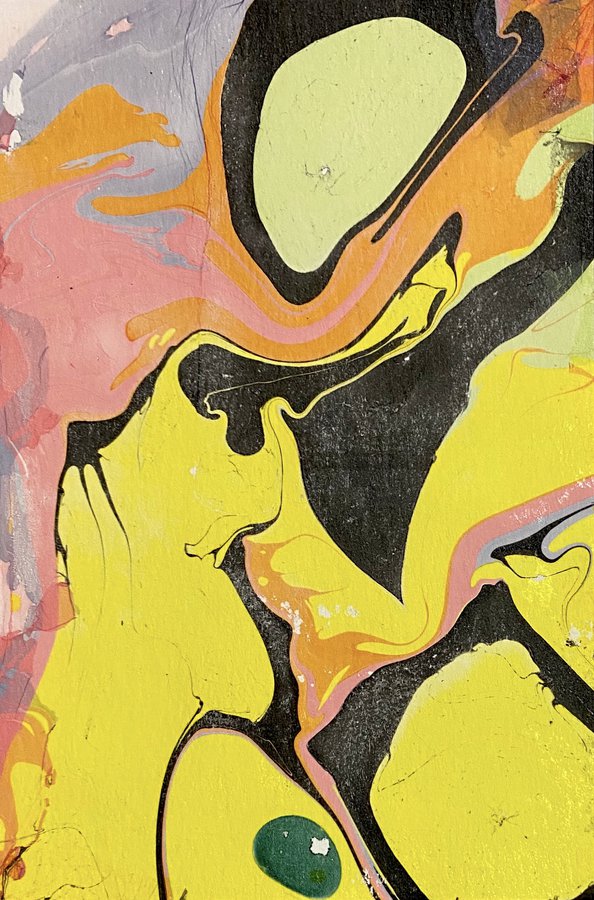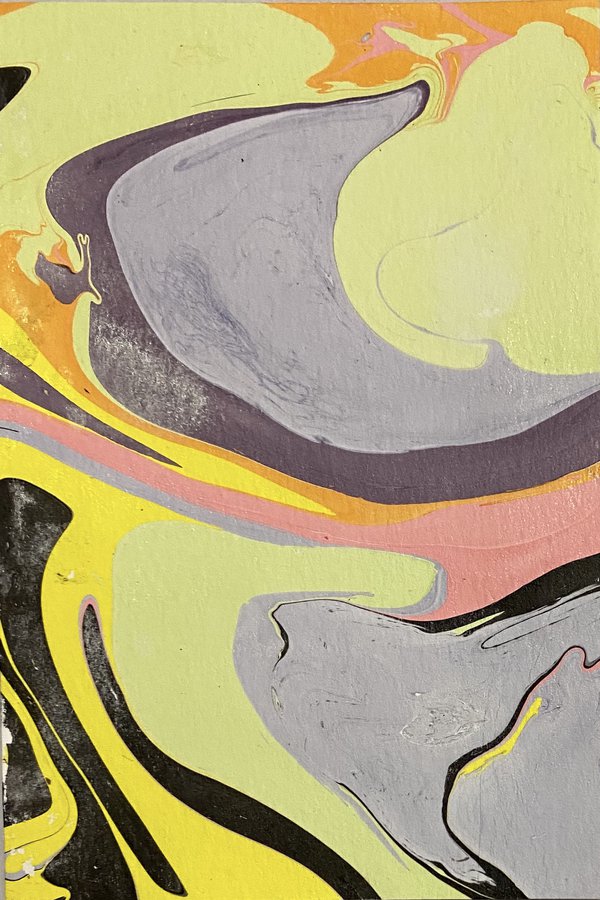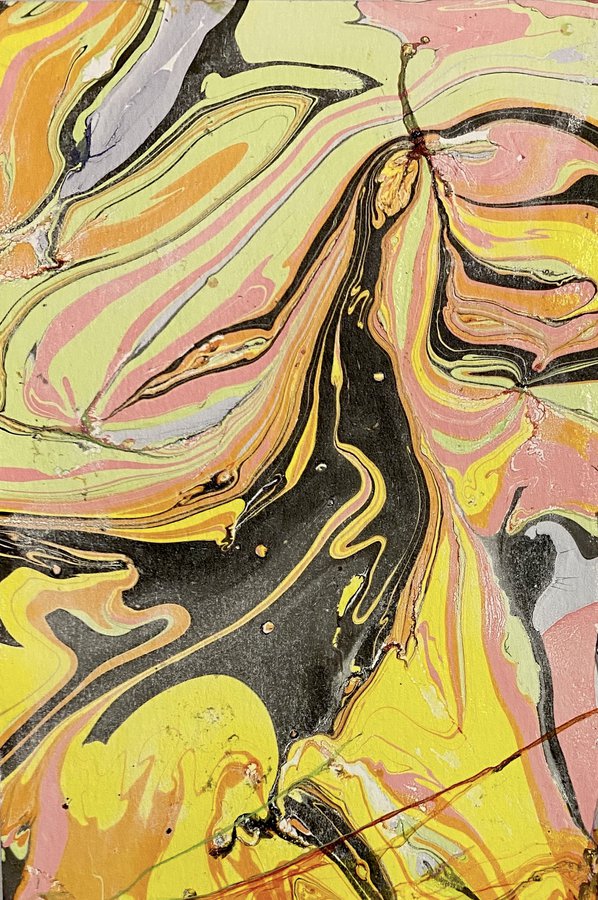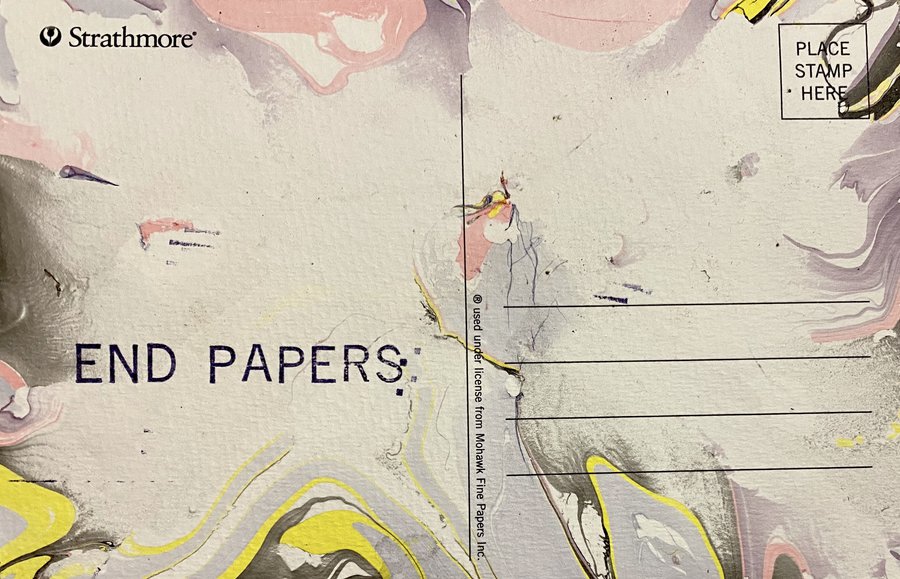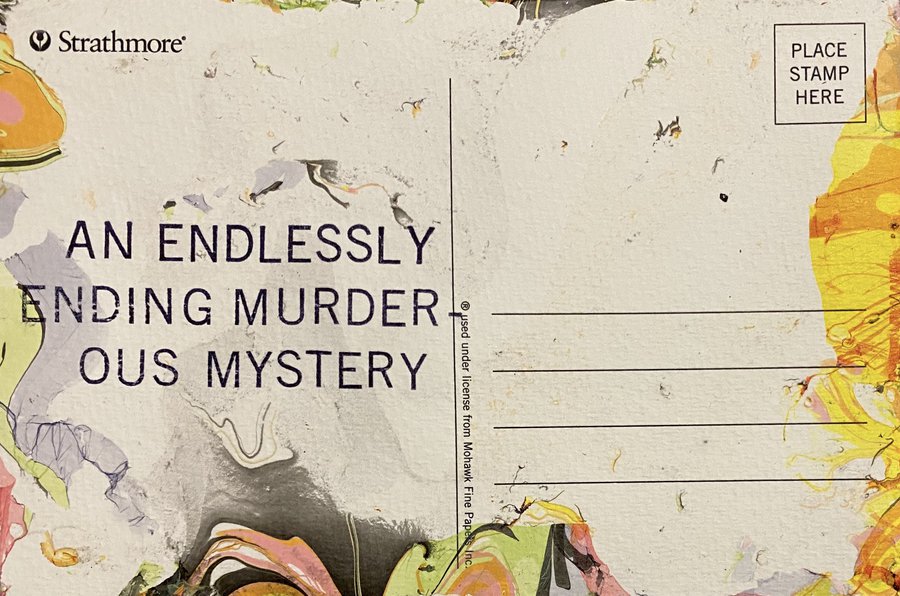Chapter 1
How does it end?
Most religions await the answer to this question with particularly violent, gruesome visions of the world, as if apocalypse is the only way out, and they seemingly – if unconsciously – work toward it. Allowing catastrophic climate change to go unchecked is one example, as is grotesque exploitation of the underclasses flourishing unhindered, with “solutions” for poverty more like punishments.
Residents of the old poor farm in Manawa, Wisconsin also must have existed in a state of waiting, caught in a seemingly endless loop of punishment-by-poverty and poverty-by punishment, the promise of release hovering just beyond the far horizon, past the improvised cemetery out amid the cornfields wherein lie those whose poverty outlasted them.
This palindromic sentence was a continuation of similar sentence paintings shown at Western Exhibitions in Chicago in 2009, this time as a set of road signs based on the old Burma-Shave advertising signs that originated in nearby Lakeville, Minnesota. It makes sense for drivers going either direction.
Location: Poor Farm, Manawa, Wisconsin
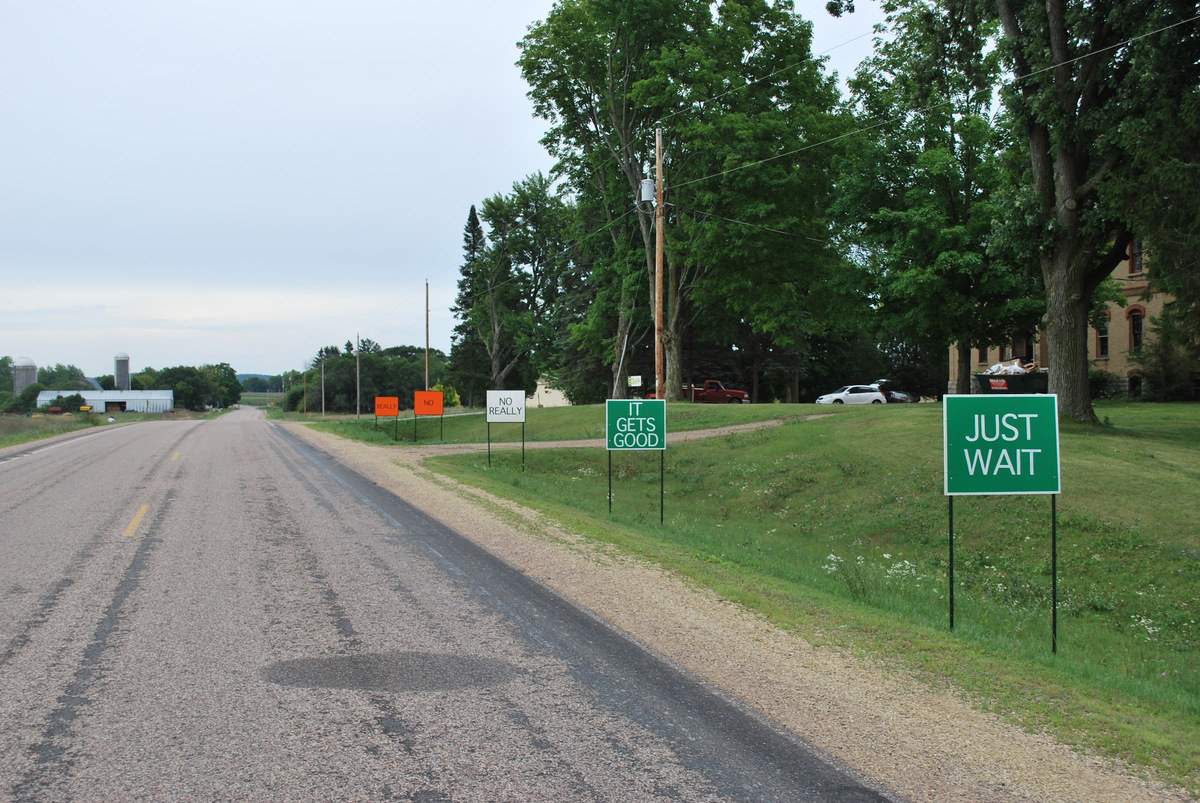
JUST WAIT, NO, REALLY, 2013
acrylic on birch plywood, metal stands
ea. 30” x 36”
Chapter 2
Depending on one’s perspective, the dead wait no more, or lay waiting for eternity to arrive.
These dead tweet from beyond the grave, their restless spirits continuing the chatter that filled their lives and connected them across space and time.
A pixellated crowd, each member like a pixel together making an image, observes from behind a screen, observed.
Tweetyard, 2020
epoxy engraved bluestone, yard
ea. ~30” x 17” x 2”
overall 42’ x 16’
Chapter 3
Slip Away, 2006
Chapter 4
One miniature vision of infinity, borrowed from a life-sized vision.
The Infinity Chamber (1968) by Stanley Landsman, made one year after my birth, was a must-do upon each visit to the Milwaukee Art Museum since I was a youth. You’d put blue slipcovers over your shoes, and one or two people at a time were let in to the ~8’ x 6’ x 8’ box, to step onto the hollow glass interior floor and gaze into the mirrored beyond.
I never really liked miniature art because of its preciousness, but when invited by John Riepenhoff to make a show for his miniature head-only gallery The John Riepenhoff Experience, I jumped at the chance to use and defy miniaturization at the same time.
Minifinity (after Stanley Landsman), 2007/2016
Mirrored and tinted plexiglas, armature, rice lights
34” x 20” x 16”
Installation view, Whitney Biennial 2017, Whitney Museum of American Art, New York, NY
Chapter 5
Imagining the invisible crowd watching a televised crowd is disorienting, distant individuals in their homes joined as one mass, the gathered crowd inside the screen another mass and the same mass at the same time.
Eventually I came to understanding “audiencing” as an act equal to performing, that while one seems passive on the other side of the screen, or even cheering madly but unable to affect the action, each individual in the crowd has independent agency in how the action is interpreted.
Those interpretations haunt the stadia and rooms long after audiences depart.
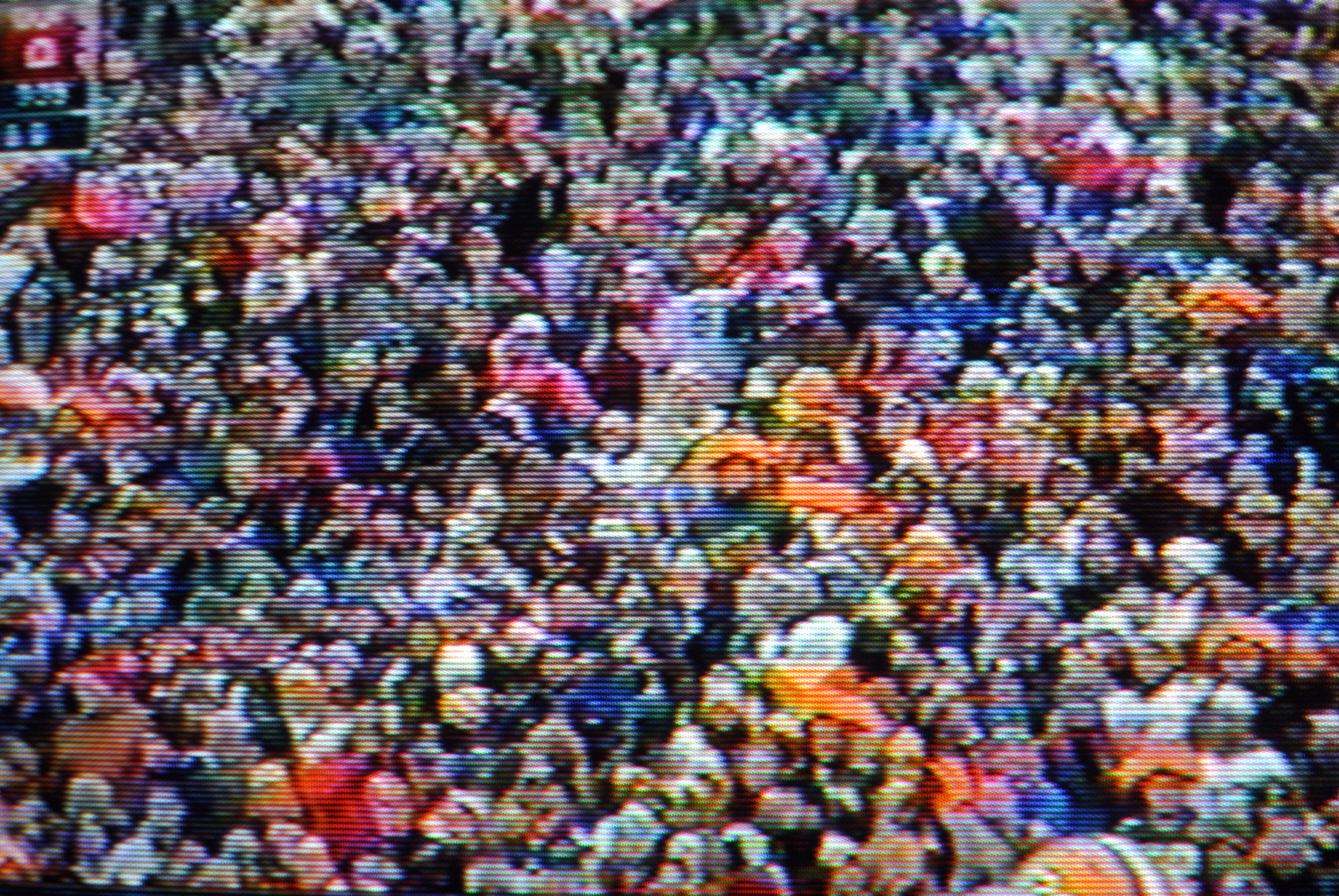
Crowd, 1997
Digital photograph taken off a TV screen
RGB TIFF image, 3872 × 2592 pixels
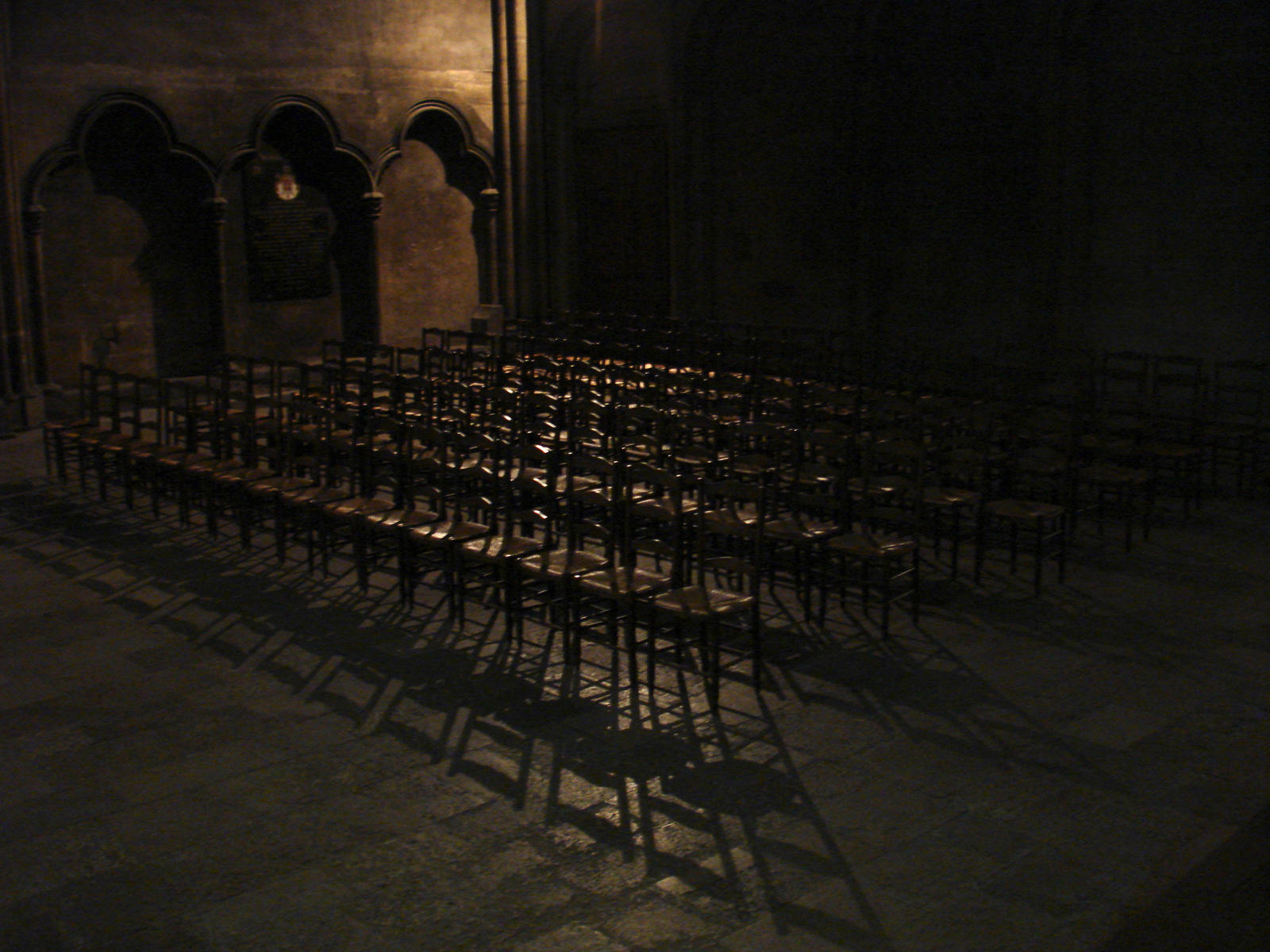
Audience, 2007
Digital photograph of chairs in a darkened church interior
RGB JPEG image, 2592 × 1944 pixels
Chapter 6
See the sad in the good is the primary lyric line in this song, from an ongoing project called Terry’s Face Cream. TFC was about the difference between the authentic emotions that motivate songwriting (depression, for instance), and performative emotions that evoke the original emotions but potentially at a great distance of time and personal evolution.
As the political system crumbles and threatens to take the world with it, some certainly see the signs of impending apocalypse, without seeing that we are selves are causing it. Unlike them, at least TFC realizes his own agency in causing his own sadness. His reason is to make things, not destroy things.
Make Myself Sad, 2008 (Recorded live at Herzog Zound studio, Milwaukee, Nov. 19, 2003)
Drums: Matt Newman
Electric Guitar and voice: Nicholas Frank
Guitar Solo: Colin Gagon
Chorus: The High Life Larynx Rattlers
Recording Engineer: Colin Gagon
Chapter 7
Ghosts are real, and literal. The ghosts of history haunt us every day, informing the things we address and the things we choose to ignore.
As a gallery owner I was once terribly offended by an artist upset that no one reviewed her show. She suggested that “if a show isn’t reviewed, it never happened.” This discounting of reality, of the experience of the people who visited the show and carry it in their memories, matches the primacy of the written record. This view, extended, utterly devalues the lived experience of millions of our ancestors who crafted lives in the world that eventually became us. If there is a collective unconscious, it surely must be this unwritten history, recorded in our genes if not our neurons.
This series of photograms records the artwork of other artists after their shows close to the public, becoming the ghosts of art history. The Peregrine was great… solo gallery installation of 2013 records a gallery that was soon to close presumably forever, along with the embroidered paintings of gallerist Edmund Chia, a Singapore resident about to graduate from school in Chicago and return to his home.
Photograms are a direct light/shadow impression of objects. The After Madison/Müller pieces were made for an exhibition at the Lynden Sculpture Garden in Milwaukee, a place dedicated to the eternal preservation of monumental sculptures made from “permanent” materials. Swiss artists Tobias Madison and Kaspar Müller made a temporary indoor sculpture using standard lamps, light bulbs, and woven extension cords. The photograms record their presence.

Peregrine was great…, 2013, Installation view, Peregrine Program, Chicago

After Chia (diptych), 2013, Photograms on Ilford RC satin paper, glue, ea. 14” x 11” x ½” (multiple sheets each stack)

After Chia 1, 2013, Photograms on Ilford RC satin paper, glue, 14” x 11” x ½” (multiple sheets stacked)

After Madison/Müller 1, 2011, Photograms on Ilford RC satin paper, 6 sheets, ea. 16” x 20”

After Madison/Müller 2, 2011, Photograms on Ilford RC satin paper, 5 sheets, ea. 16” x 20”
Chapter 8
Of course, the end papers arrive in the middle of the exhibition.
This series of marbled End Papers were made expressly as a framework for this Gondola Wish remote viewing exhibition, recalling both the beginning and end of a book, and the physical presence of books held in the hands. Here, as real pieces presented electronically at a distance, the both counter and support remote viewing technology like electronic reading devices.
In this context, that of a murder mystery, they are also meant to suggest the beginning and end of a life, a world, and a universe.
Each is postcard-sized, and will be sent via USPS from my home in San Antonio to people involved in the exhibition.
End Papers, 2020, Marbling pigment on Strathmore 300 lb. postcard paper, ea. 6” x 4”
Chapter 9
Whatever your politics, the November 2016 election can be seen as an apocalyptic moment for American democracy. The furthest threads of right-wing authoritarian plutocracy took over the executive branch of government, even as the far left called for a similarly revolutionary takeover by anti-neoliberal activists.
Many throughout the political spectrum were shattered by the result.
I arrived to my Artpace residency the day before the Women’s March on January 21, 2017. One project I made during the residency was a series of shattered glass prints, essentially intaglio monotypes of glass panes shattered by pressure as they were run through the printing press. As incidental abstractions, they recall the marbling of the End Papers.
The series included one diptych, each plate made using opposite processes: one was inked and wiped like a traditional intaglio, ink embedded in the cracks; the other made like a block print, rolled and pulled with the cracks appearing as negative space. Toggle between the two prints to see how they are made from the same plate.
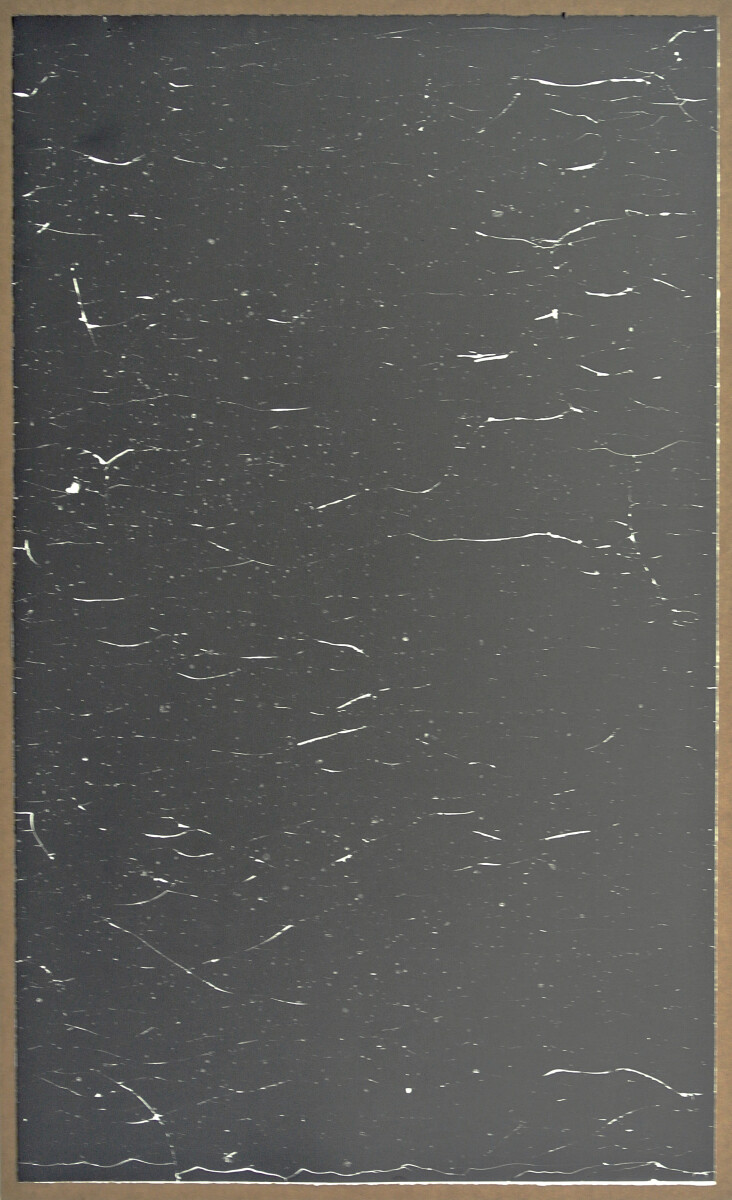
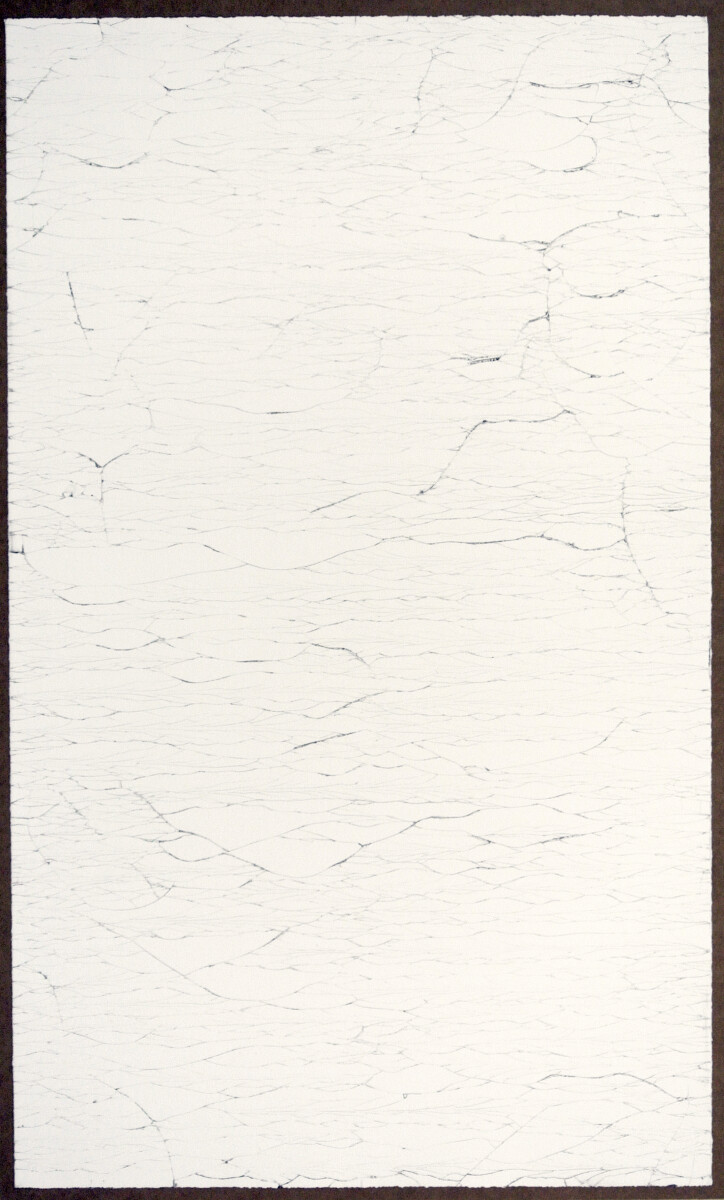
Shattered (diptych), 2017, Intaglio ink on Arches paper, ea. 30” x 18”
Chapter 10
The Secret Choreographer echoes the photograms project by creating dance works in galleries after exhibitions have closed to the public. The masked dancer improvises movement using the artwork as reference and platform.
For Lost Walls laments that the white walls of galleries and museums close these spaces off from the world, the place and time and human presence of the works’ origins. The transparent surfaces of Kerstin Brätsch’s paintings directly counter this opacity, and their non wall-bound hanging suggests that walls are unnecessary.
Endless Outskirts recalls both Alvin Nikolai’s sculptural dance costumery and Brancusi’s Endless Column sculptures, suggesting that the human chain extends endlessly back and forth in time. My own Activity abstract paintings served as backdrop and support for the dance.
The Secret Choreographer: For Lost Walls (After Brätsch), 2012
Dance, Green Gallery West, Kerstin Brätsch painting on clear acrylic
Color video
Dur. 35:00

The Secret Choreographer: For Lost Walls (After Brätsch), 2012
Looped video of dance originally performed at Green Gallery West with Kerstin Brätsch
Painting on clear acrylic, custom pedestals with plexiglas cubes and panes, video projection reflected on all four walls of the LUMP gallery back room

Endless Outskirts, 2013
Performance at NADA New York in Green Gallery booth
Dancers: Nicholas Frank, Annina Herzer, Amy Granat
Chapter 11
The Endless Outskirts performance was actually done to generate material for new pages of the Nicholas Frank Biography, an ongoing project charting the life and artwork of an artist resembling myself but more accomplished and recognized. The pages always appear singly in frames, or in this case, discontinuous as digital records.
Some of the projects recounted in its yellowed pages actually happened, others are staged for the Biography. The third-person account is breathless in its admiration for the artist’s life work, though skepticism becomes more palpable as the biography progresses.
Selected Pages, 2013 toner on aged book paper, 6” x 4”
Chapter 12

POPTPOP: Moscow (Accidental hair selfie), 2008 digital photograph, 3056 × 2292

POPTPOPS, 2015, Installation view of POPTPOPS on view in Post-Self solo exhibition at Western Exhibitions, Chicago

Greatest Skips, 2015, Vinyl LP, printed cover and slipsheet, ed. 500 dur. ~30:00
Chapter 13
Painting has been a struggle. A medium superceded by other mediums, its currency dependent on a tradition that remains valid while being invalidated by its exclusionary principles. My paintings are incredibly self-conscious.
This painting of a painting is one of a long lost series, shown once at Small A gallery in New York, then briefly in a Western Exhibitions hotel show adjacent to Art Basel Miami – drawing a comment from Jerry Saltz that it “taught me something,” and since lost to time.
The title refers to unrecorded time, pre-histories both personal and universal.
The Terry’s Face Cream song One Plus One is sung to “a lover now mine but soon to be lost.” In this context the lover is Earth, or normalcy, or security, or the sense that things continue in a slow march of progress toward justice.
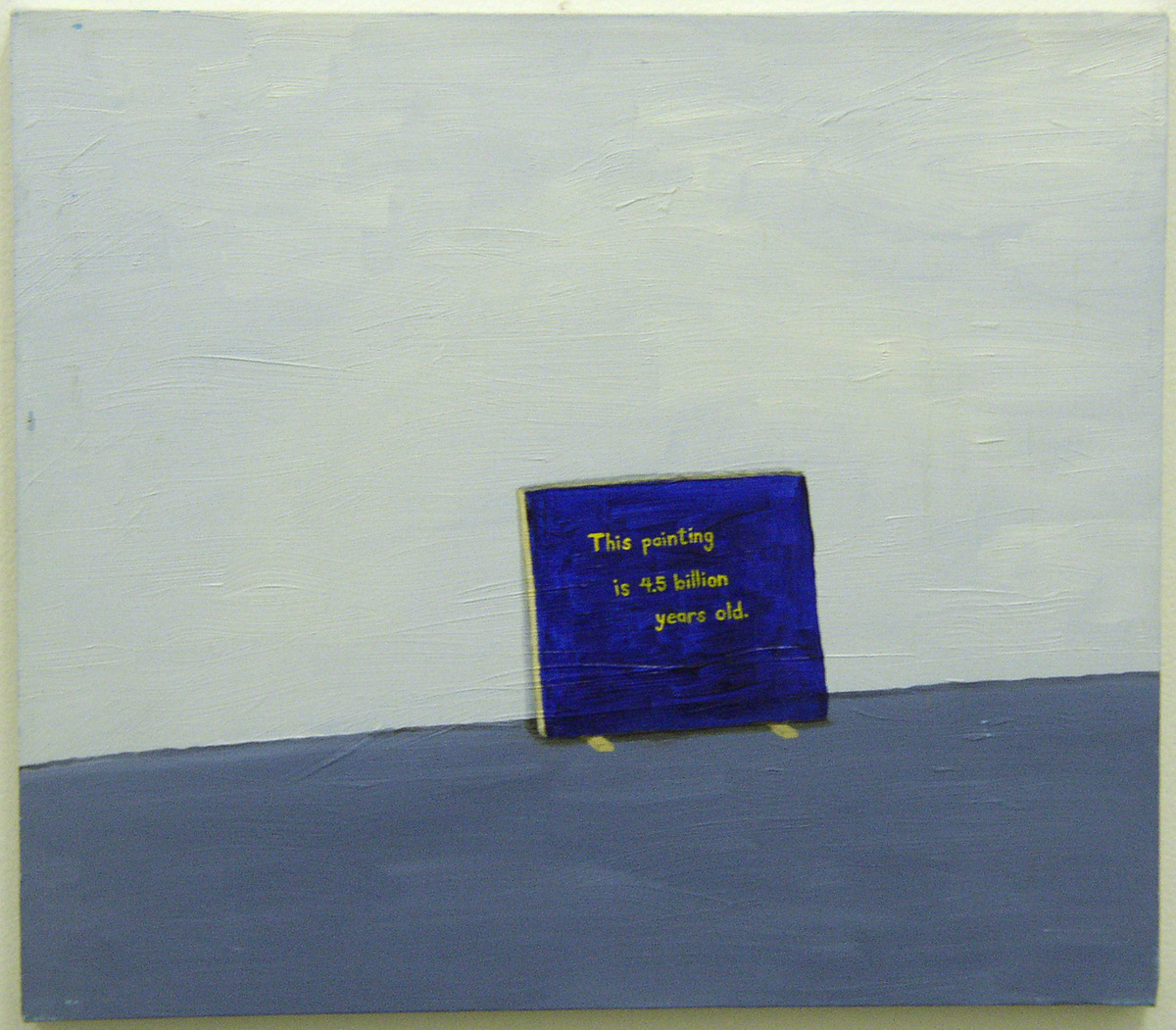
pre-BIO, c. 1999
Oil on canvas
11” x 14”
One Plus One, 2008 (Recorded live at Herzog Zound Studio, Milwaukee, Nov. 19, 2003)
Drums: Matt Newman
Electric guitar and voice: Nicholas Frank
Guitar solo: Colin Gagon
Recording engineer: Colin Gagon
Chapter 14
There have been so many apocalypses expected by various cults, sects, religions, that it’s impossible to keep track. No matter how many have been discounted – simply by their predicted end dates being surpassed – people still flock to these end-of-word scenarios as though inevitable. Whether they privately acknowledge or deny their own roles in helping along or encouraging such scenarios is left to their own consciences.
The repetition of imagined ends again finds its reflection in Texas Skips, a new collection following on Greatest Skips but charting skips acquired since moving from Milwaukee to San Antonio in 2017.
In some ways, I was programmed to stay in Milwaukee my whole life, but I jumped the track and defied my programming to find a new way of being. Texas Skips is ongoing.
How does it all end?
It keeps ending and ending, endlessly, for some. For the rest of us, we keep going, trying to stop the end from ending.
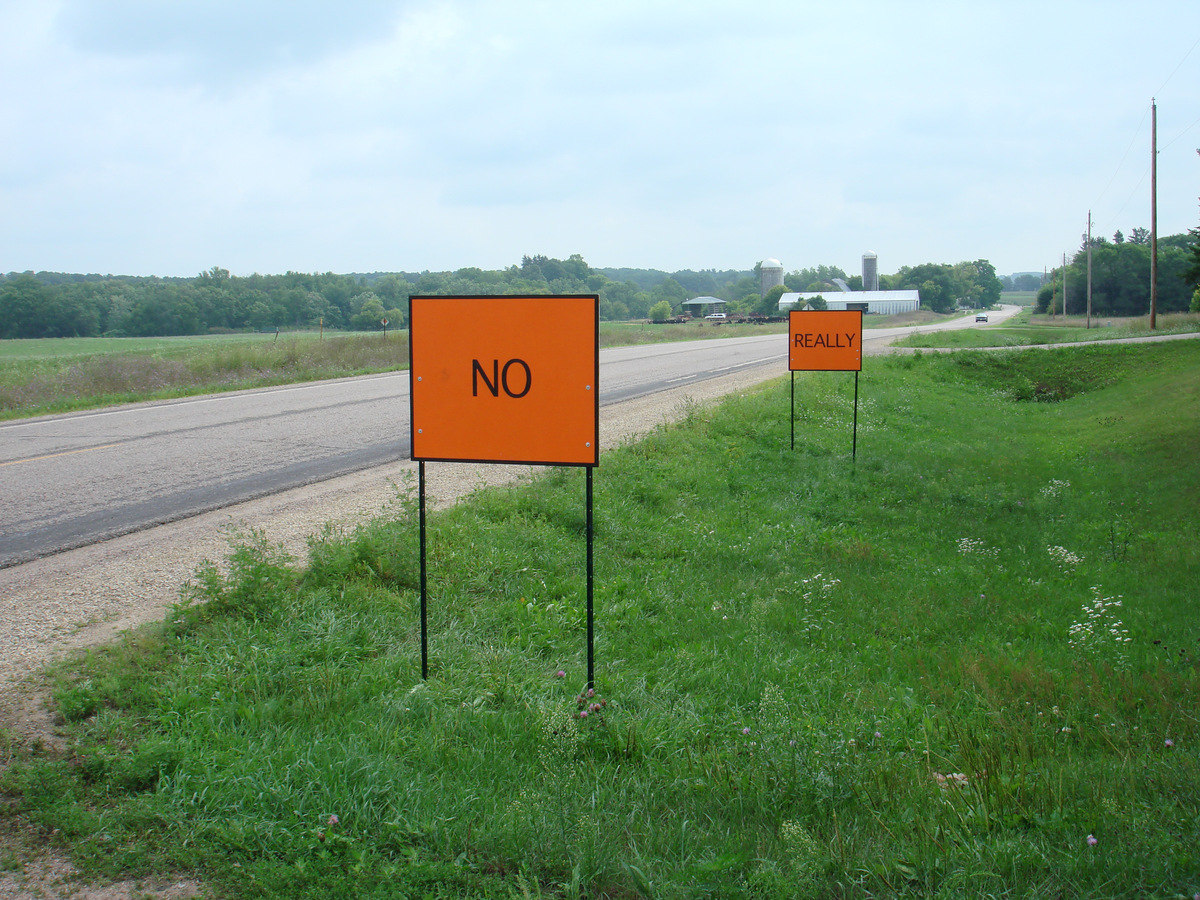
NO, REALLY, 2013 Acrylic on birch plywood, metal stands ea. 30” x 36”
Texas Skips, 2018, Digitized audio complication




















